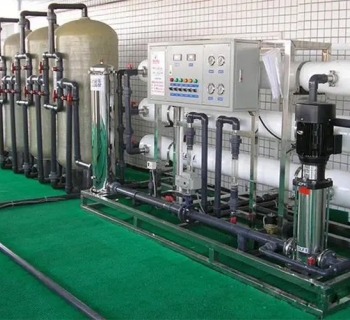Didecyl dimethyl ammonium chloride is a cationic surfactant with stable chemical properties and low irritation. It is widely used in medicine, health, and civil use, such as disinfectants, fungicides, woolen fabric mothproof agents, oilfield water injection fungicides, industrial circulating cooling water fungicides, and wood preservatives. As a third-generation product of quaternary ammonium salt fungicides, its ability to kill microorganisms is significantly enhanced. But when using it, pay attention to its irritating odor, avoid skin and eye contact, and avoid using it with soap, potassium iodide, and other substances.
1. Stable chemical properties: Didecyl dimethyl ammonium chloride is a light yellow to water-white transparent liquid at room temperature and has good chemical stability.
2. Efficient microbial killing ability: As a third-generation product of quaternary ammonium salt fungicides, didecyl dimethyl ammonium chloride has a significantly higher killing ability against microorganisms than the first and second-generation products.
3. Stimulus odor: Although this compound needs to pay attention to its irritating odor, it does not hinder its widespread application in multiple fields.
1.Disinfectants and fungicides: Didecyl dimethyl ammonium chloride is widely used as a disinfectant and fungicide, which can effectively kill or constrict the growth of various microorganisms, for example, bacteria, viruses, and fungi.

Didecyl dimethyl ammonium chloride is widely used as a disinfectant and fungicide
2.Insect disease control: This compound can be used to control insect diseases and has good effects in preventing and controlling certain insect diseases caused by microorganisms.

Didecyl dimethyl ammonium chloride for controlling insect diseases
3.Woolen fabric insect repellent: Didecyl dimethyl ammonium chloride can be used as an insect repellent for woolen fabrics, effectively preventing insect damage to woolen fabrics and extending their service life.

Didecyl dimethyl ammonium chloride as a moth proof agent for woolen fabrics
4.Oilfield water injection fungicide: During the oilfield water injection process, didecyl dimethyl ammonium chloride can be used as a fungicide to prevent the growth of microorganisms in the water injection system, ensuring the cleanliness and safety of oilfield water injection.

Didecyl dimethyl ammonium chloride can be used as a fungicide in oilfield water injection process
5.Industrial circulating cooling water sterilization and algae killing agent: In the industrial circulating cooling water system, didecyl dimethyl ammonium chloride can be used as a sterilization and algae killing agent, effectively inhibiting the growth of bacteria and algae and maintaining the normal operation of the circulating cooling water system.

Didecyl dimethyl ammonium chloride used as a bactericidal and algal killer in industrial circulating cooling water systems
6. Wood preservatives and anti-discoloration agents: Didecyl dimethyl ammonium chloride can also be used as a wood preservative to prevent microbial erosion and discoloration, protecting the quality and aesthetics of wood.

Company Profile
NANOTRUN(www.rboschco.com) is a trusted global chemical material supplier & manufacturer with over 12-year-experience in providing super high-quality chemicals and nanomaterials, including boride powder, nitride powder, graphite powder, sulfide powder, 3D printing powder, etc.
The company has a professional technical department and Quality Supervision Department, a well-equipped laboratory, and equipped with advanced testing equipment and after-sales customer service center.
If you are looking for high-quality Didecyl Dimethyl Ammonium Chloride , please feel free to contact us or click on the needed products to send an inquiry.
Payment Term
L/C, T/T, Western Union, Paypal, Credit Card etc.

Shipment Term
By sea, by air, by express, as customers request.
Storage Conditions:
1. Sealed storage: Didecyl dimethyl ammonium chloride should be stored in a sealed container to combat contact with moisture, oxygen, or other impurities in the air, thereby maintaining its chemical stability.
2. Avoid high temperatures: Due to the possibility of compound decomposition or accelerated chemical reactions caused by high temperatures, didecyl dimethyl ammonium chloride should be stored in a cool and ventilated place, away from heat sources and direct sunlight.
3. Keep away from sources of fire: didecyl dimethyl ammonium chloride is a flammable substance, so it should be stored away from sources of fire and any items that may cause a fire.
4. Avoid contact with incompatible substances: It should be avoided to store together with substances such as soap and potassium iodide that may undergo chemical reactions with them to prevent the generation of harmful by-products or affect the effectiveness of compounds.
5. Clear labeling: The storage container should have clear labeling, including the compound's name, storage conditions, hazard warnings, etc., for easy management and use.
Q1
What is the main synthesis method of didecyl dimethyl ammonium chloride?
Re:The synthesis of didecyl dimethyl ammonium chloride mainly involves a quaternization reaction. During this process, didecyl dimethyl ammonium hydroxide reacts with a chlorinating agent (such as hydrochloric acid or chlorine gas) to produce didecyl dimethyl ammonium chloride. Reactions are usually carried out in appropriate solvents and temperatures to ensure the reaction's efficiency and the product's purity. In addition, during the synthesis process, attention should also be paid to factors such as the proportion of reactants, reaction time, and temperature to obtain high-quality final products.
Q2
What is the specific bactericidal mechanism of didecyl dimethyl ammonium chloride as a disinfectant and bactericide?
Re:As a disinfectant and fungicide, the bactericidal mechanism of didecyl dimethyl ammonium chloride mainly involves destroying the cell wall or membrane structure of microbial cells, leading to leakage of substances inside the cells and ultimately killing microorganisms. In addition, it can also interfere with the metabolic processes of microorganisms and inhibit their growth and reproduction. Therefore, this compound has bactericidal effects on various bacteria and viruses and is widely used in medicine, health, and civilian use.
Q3
How does didecyl dimethyl ammonium chloride help control insect diseases?
Re:Didecyl dimethyl ammonium chloride can have a toxic effect on insects by disrupting the stratum corneum or cell membrane structure on their body surface, thereby helping to control insect diseases. In addition, it can also interfere with the nervous system or metabolic processes of insects, affecting their normal physiological functions and causing insect death or loss of reproductive ability. Therefore, in agriculture, didecyl dimethyl ammonium chloride can be used as an insecticide or insecticide to help prevent pests and protect crops and trees.
Q4
Will the pungent odor of didecyl dimethyl ammonium chloride impact users and the environment?
Re:Didecyl dimethyl ammonium chloride has a pungent odor, which may have certain impacts on users and the environment. Irritating odors may cause discomfort to users, such as respiratory or eye irritation. Meanwhile, releasing this compound into the environment may impact air quality, especially for sensitive populations and ecosystems. Therefore, when using dodecyl dimethyl ammonium chloride, it is necessary to take protective measures to avoid prolonged exposure to irritating odors and follow relevant environmental regulations to ensure that its impact on the environment is minimized.
Q5
What interactions may occur when using didecyl dimethyl ammonium chloride in combination with soap, potassium iodide, and other substances?
Re:There may be interactions when used together with soap, potassium iodide, and other substances. Specifically, the simultaneous use of didecyl dimethyl ammonium chloride with soap may reduce its bactericidal effect, as the surfactants in soap may compete with didecyl dimethyl ammonium chloride for adsorption, thereby reducing its concentration on microbial surfaces. In addition, the simultaneous use of dodecyl dimethyl ammonium chloride and potassium iodide may result in chemical reactions, generating toxic ammonium iodide and potentially undermining human health and the environment. Therefore, when using dodecyl dimethyl ammonium chloride, it is necessary to avoid using it together with these substances to ensure its safety and effectiveness.
Didecyl Dimethyl Ammonium Chloride Properties | |
| Other Names | N/A |
| CAS No. | 7173-51-5 |
| Compound Formula | N/A |
| Molecular Weight | 362.08 |
| Appearance | NA |
| Melting Point | N/A |
| Boiling Point | N/A |
| Density | N/A |
| Solubility in H2O | N/A |
| Exact Mass | N/A |
Didecyl Dimethyl Ammonium Chloride & Safety Information | |
| Signal Word | N/A |
| Hazard Statements | N/A |
| Hazard Codes | N/A |
| Risk Codes | N/A |
| Safety Statements | N/A |
| Transport Information | N/A |




